Magnets, in marketing, are an effective technique for gaining a prospect’s contact information.
The problem is these magnets can take a lot of time and energy to produce. Podcasts, e-learning courses, video series, and contests all sound great – but who has time to create them all?
![→ Download Now: The Beginner's Guide to Email Marketing [Free Ebook]](https://i4lead.com/wp-content/uploads/2021/07/53e8428a-29a5-4225-a6ea-bca8ef991c19.png)
In this article, I’ll reveal 19 lead magnet ideas you can create today by repurposing content you already have.
Before I share lead magnet examples, let’s quickly review the conversion path that turns website visitors into leads – and the role email marketing plays in this process:
- Call to Action (CTA): This is the button that website visitors click to access the resource you’re offering.
- Landing Page: This is where your lead magnet captures information provided by the visitor. Once visitors click on the CTA, they’re brought to a landing page where they fill out a form with their name, email address, and any other relevant information you’ve deemed important.
- Thank-You Page: The visitor-turned-lead now lands on a thank-you page with information on where to access their resource and is added to your mailing list.
- Kickback Email: The kickback email is your follow-up message to the lead a short time after the exchange takes place. This email marketing campaign starts a conversation with the lead to keep them engaged with your business.
Every blog post in your archive has the potential to generate new leads for your company, so let’s make sure that your blog is a lead-generating machine.
1. Figure out who you’re targeting and what they want.
The goal of a lead magnet is to offer something your audience wants in exchange for their contact information.
To do this, you have to know what user persona you’re targeting and what offer would entice them.
You may have one to three personas with different needs and pain points. That means one lead magnet likely won’t appeal to all three personas.
For instance, let’s say you are an influencer marketing agency. You may have two personas, each facing these issues:
- Influencer #1 doesn’t fully understand the inner workings of an influencer-brand relationship. They don’t have all the tools to brand themselves and foster relationships.
- Influencer #2 is overrun with brand partnerships and has reached a point in their success where they are so busy with managing administrative tasks that they have limited time to create content.
Knowing this, the agency could create knowledge-based lead magnets for influencer #1, focusing on ebooks and knowledge libraries. For influencer #2, the agency may offer resource-based magnets, such as templates and tools.
During this process, you can also get some ideas from your competitors. What offers are they creating? What are they including in their offers? Use that as your starting point.
In addition, look at your current content library. What has your audience responded most to? Are they asking questions on a particular topic? Are they more engaged in videos or blog posts? This can be a big indicator of what they’ll want in a content offer.
2. Create, design, and name your lead magnet.
Now that you know what your offer will be, it’s production time. You have to create and design your lead magnet.
If you don’t have an in-house designer, you can utilize a platform like Canva. Their platform offers hundreds of templates that you can customize to build your lead magnet, everything from books and presentation slides to worksheets and reports.
You can also outsource the work using an independent contractor with the skills to produce a high-quality offer.
Once the design work is done, name your lead magnet.
Think of something catchy that will pull in your audience and highlight its benefits, like “The Ultimate Worksheet Every Influencer Needs,” and “101 Ways to Monetize Your Brand.”
3. Build your conversion path.
The next step is building your conversion path, which must include your landing page, thank-you page, form, and email sequence.
Starting with your landing page, there are a few best practices to improve conversions:
- Have a dedicated landing page that doesn’t include a navigation bar. This will keep users’ focus on your offer and not the other pages on your website.
- Write a clear call to action. Your CTA should be clear, short, and to the point. It should also use words that will appeal most to your audience.
- Consider eye scanning patterns. Users in Western cultures typically follow F- and Z- reading patterns, which is why most landing pages are designed with key elements placed in those zones.
- Add social proof. Adding reviews and testimonials to your landing pages adds credibility to your offer and can increase your conversion rate.
For your form, the two pieces of information you’ll want to include are name and email. Everything else is optional. However, keep in mind that the more fields you include, the higher the chance a user may abandon the form.
Next up, your email sequence: Once you’ve acquired your lead, you can add them to a nurturing sequence that will lead them further down the funnel. This can include additional resources, such as webinars and newsletters.
Lastly, make sure to set up tracking on your conversion path to see how users are behaving on it and identify optimization opportunities.
4. Set a schedule to update regularly.
Depending on the type of lead magnet you create, you may need to update it every six months to a year.
For instance, let’s say you created a report on 2021 data science salaries. As you get closer to 2022, you’ll need to update the information on the report to reflect current data. Otherwise, your offer may no longer be valuable to your audience.
In addition, if you conduct feedback surveys on your offers, sift through your leads’ comments. Their comments could give you ideas on how to improve your current offer.
Lead Magnet Examples
The Sales Evangelist is a sales coaching and training business designed to help sales managers and their teams thrive.
The company offers a free ebook titled “How to Transform Your Small Business Sales,” which offers insights on how to generate more sales.

What’s clear is that this particular offer targets small business owners who may not have the proper sales process in place to make sales consistently.
The copy addresses the user’s pain point, provides the potential reasons, and leads into why this offer will help resolve it – a classic and effective formula for landing page copy.
When you think of a lead magnet, you probably think of an ebook.
But here’s another quick and easy lead magnet you can develop that will only take you a few hours (at most): a quiz.

In this example, this brand, which offers WordPress maintenance services, tests its audience with their WordPress knowledge.
After answering a few questions, they must enter their email address to view the full results. Then, you land on a landing page with your knowledge level and the option to share your results on social media.
As a maintenance service, this is a great lead magnet strategy. It can serve as a signal to users who are considering outsourcing this service that they may not have the knowledge to manage their site on their own. And it’s interactive, which is already a win.
In addition, this quiz will require little to no maintenance, as all the questions are based on historical facts – making it a simple but effective lead magnet.
Another interactive lead magnet you can consider is a grader or calculator.
HubSpot offers a website grader, which takes seconds to scan your website and provides a score based on performance, mobile experience, SEO, and security.

After providing your email and website, you get a detailed report about your website’s performance along with a corresponding course based on your results.
What works well: The grader helps you identify potential issues with your website and offers a solution to resolve them.
Clever Girl Finance is a personal finance platform that empowers women to take charge of their finances.
Among the host of free resources on their site, this one, in particular, stands out.

It’s a video library filled with recordings from personal finance coaching calls and when users sign up, they gain access to past and future recordings.
What’s great about this tactic is it answers a need.
Clever Girl Finance’s target audience likely wants a community in which to discuss financial topics, get their questions answered, and hear directly from experts. This lead magnet does just that.
It’s also one of those one-and-done magnets that require little maintenance beyond uploading new recordings.
The team can then repurpose the content of those recordings for future blogs, video snippets, and more.
15 Additional Lead Magnet Ideas to Try
1. Ebooks
The ebook is perfect when you have a series of blog posts about a related subject.
For example, if you were running an online pet store, you might pick out the following five posts from your blog to combine into an ebook:
- “The 5 Pieces of Equipment That Every Puppy Needs”
- “The Ultimate Guide To Housetraining a Puppy”
- “The First 6 Months: What You Can Expect From Your New Puppy”
- “The Puppy Nutrition Guide: What Your Dog Should and Shouldn’t Eat”
- “The 7 Things You Should Never Do When Training a Puppy”
These posts could be logically compiled into an ebook entitled: “The Puppy Planner: Everything You Need To Know To Prepare for Your First Puppy.”
This type of ebook is effective because you’re making the lives of your website visitors easier – which should be the goal of any lead magnet you create. Rather than asking them to find all this content one article at a time, you’re packing it up into a convenient bundle that they can keep and refer back to.
The most successful lead magnets offer an irresistible and instant reward to your visitors, and the ebook checks off that box.

2. Guides
If you’re in an industry that is already well established, it can be hard to come up with original content.
Sometimes other people have covered a subject in such detail that it’s almost impossible to add extra value. In this situation, I’d recommend producing an ultimate guide.
An ultimate guide is a comprehensive collection of the best articles about a particular subject. The main difference between this and an ebook? You’re not recycling posts from your blog; you’re linking directly to other sites.
It’s important that you don’t copy and paste someone else’s content into your guide, but rather include a link back to the original article.
In the example below, Brian Dean from Backlinko.com produced “Link Building: The Definitive Guide.”

Link building is a complicated and broad subject. Dean’s definitive guide saves his audience a lot of time looking for this content.
And because so many other experts have written fantastic content about link building, Dean also saved himself the time of competing with content that already exists.
Rather than just listing the links, Dean adds extra value to his audience by categorizing them and including a brief introduction for each category.
This guide has also been well designed, reiterating that this is a valuable resource that should be kept and referred back to.
Do you work in an industry that is already bursting with quality content? Think about making your own ultimate guide.
Do you work in an industry that is already bursting with quality content? Think about making your own Ultimate Guide.
3. Bonus Packs
Offering additional content that is not included in the original blog post is the perfect way to reward readers who opt-in.
If you have an article titled, “The 5 Pieces of Equipment That Every Puppy Needs,” you could offer readers an exclusive PDF with a few more pieces of equipment that may have come on the market since the original post was published.

In his article, “How to Go From One Facebook Ad to $197 in Less Than 60 Seconds,” blogger Bryan Harris took this one step further and combined a PDF version of the article along with five links that weren’t in the original post – people only received these bonuses when they subscribed.
4. Resource Libraries
If you’ve already written a strategic blog post, consider offering a resource library or guide as a lead magnet.
A resource library is a collection of tools that help people achieve results.
David Dean from Backlinko used this strategy in his post, “SEO Tools: The Complete List.” He offered a free download that detailed the 153 tools featured in his post – the perfect resource for a reader to keep and refer to whenever they need.

This library could be as simple as a list of five books or apps that you recommend.
What resources could you recommend to a potential customer that would help them to achieve better results?
5. Checklists
Instructional blog posts are just waiting to be turned into checklists – and they couldn’t be easier to create.
Just take your blog post and simplify it into a series of bullet points. Next, remove any points that don’t contain actionable advice. Split the list into several numbered steps to make the outcome more achievable.
Bonus points if you offer the checklist in a printable format so people can physically tick off each item on the list as they complete it. This sense of achievement is a great feeling that people will attribute back to your business.

The “Ultimate Webinar Checklist” from HubSpot above is a valuable lead magnet because of how practical it is.
Hosting a webinar involves balancing a lot of different tasks coming together at the same time. This checklist informs you about everything you need to watch out for, from pre- to post-webinar.
6. Workbooks
In its simplest form, a workbook is a download-and-complete resource that helps people to apply the principles of your blog post to their own business.
The goal of a workbook is to have the participant learn by doing. As the teacher in this scenario, you’re positioning your business as an expert on the subject matter at hand.
With that in mind, you’ll want to choose the exercises included in your workbook carefully. Tease information out of the participant gradually, so that at the end of the workbook they can combine their short answers into a comprehensive piece of work.
A workbook is the perfect stepping stone to your premium products or services, so be sure to include a strong call to action at the end that tells the participant how you can help them to apply their newfound knowledge.
Is there a particular subject that you could help your audience understand more clearly with a workbook?
7. Case Studies
Case studies depend on very specific types of content, but the successes they reveal can entice a site visitor to take action.
If you have a blog post or interview clip that spotlights a real customer you’ve worked with, package this content into a written case study that expands on the need the client came in with and the metrics of their success.
Then, gate this case study behind a form that website visitors can fill out with their name and email address to access.
Keep in mind that you’ll need permission and approval from the client on which you’d like to create a case study.
Once you receive this approval, however, it’s a perfect lead magnet to host content that tells your readers about a customer success story.
8. Webinars
Webinars don’t have to be long, collaborative presentations with multiple colleagues or partners.
If you’ve got a blog post that merely touches on a subject you’re an expert in, use this blog post as a springboard into a live talk hosted by you and a coworker.
If you’ve written an article about the latest IOS cookie restrictions, for example, convert this article into a slide presentation and present it through a live conferencing platform, using helpful visuals.
You should also provide insight that listeners wouldn’t have gotten from just the blog post.
As a bonus, you can use the webinar recording as an additional offer.
9. Cheatsheets
If your blog post covers a complicated topic, it might be a good idea to offer readers a one-page sheet that they can refer back to when they need to refresh their memory. This could be a glossary of terms or just a summary of some key points.
This type of download-and-keep resource takes the pressure off readers so they don’t have to memorize or implement your strategy immediately. It does compel readers to opt-in to your list though, which is the ultimate goal.
In addition, the compact format means that people can quickly glance at it while they are going through the editing process. It’s a complementary tool for an existing process.
10. Guestbooks
Guest blogging is a terrific backlink strategy, but those who use it typically agree to not republish that particular post on their own blog.
This is fairly common, as Google punishes sites that duplicate content onto two publications – it’s in nobody’s interest to do so.
What you can do, though, is compile all these guest posts into a book format.
Since the content will be gated behind a lead capture form, there is no risk of Google flagging it as duplicate content and you get to squeeze a little bit of extra value from that content you worked so hard on.
11. Whitepapers
Have an interesting survey that your team recently ran? Or perhaps you know your audience is looking for specific information to inform their future strategy?
If so, leverage this knowledge to create downloadable reports based on your team’s research.
You may have talked about these findings in a blog post or a recent webinar. Repurpose that content for a detailed report.
This will position you as a credible resource in your industry and bring you that much closer to converting your target audience.
12. Templates
Templates are some of the most popular lead magnets out there.
Why? Because they help users streamline their processes and save time. But at the core of it, it solves the problem many of us have: creating and designing from scratch.
You can create templates for just about anything:
- Emails
- Social media
- Spreadsheets
- Graphic designs
It’s all about tapping into what your audience needs the most and creating that for them. Plus, it’s another low-maintenance magnet.
13. Email Course
Companies offer online courses all the time, but they’re not the only place to launch a course.
A 2019 Statista survey found that most people (over 80%) check their emails every few hours including outside of normal business hours.
We also know that email newsletters are very popular, with just about every company sending its top insights to your inbox every day.
With this in mind, starting an email course is a great lead magnet option.
An email course is a series of emails that can be anywhere from three to 10+ emails that cover a topic in depth.
The benefit for you? It’s a format most users are familiar with and it’s quick to launch.
In addition, you have multiple opportunities to nurture your audience and guide them down the buyer’s journey, compared to a one-and-done ebook that a user may or may not read.
14.Access to a Private Group
As a business, community management is a key aspect in gaining brand loyalists. It can also be an effective way to generate leads.
Platforms like Slack, Facebook Group, and LinkedIn allow you to do both.
For many businesses, their target audiences value community and want a space to discuss topics relating to their needs, goals, and challenges.
Creating that space will help you generate leads and get to know your audience better.
15. Behind-The-Scenes or “Secret” Insights
One of the best lead magnets I’ve ever seen was produced by Tim Soulo. It was so effective that I immediately opted-in without thinking twice. Suolo had written a blog post about sending an outreach email to well-known SEO expert Rand Fishkin. His call-to-action was the following:

This call-to-action was pitch perfect because it got me curious. I just had to know what the email subject was.
I also knew that it would be a relatively short read so I wouldn’t have to commit to a lengthy ebook – lazy, I know, but that’s human nature sometimes.

Suolo’s lead magnet is just one page and was made using a standard word processor. There was no point in spending time or money on the design in this case because the secret is the only thing that matters.
I blurred out the tell-tale image and text in the above screenshot – if you want to know Suolo’s secret, you’ll just have to download the lead magnet!
Do you have any behind-the-scenes insights to a blog post that are compelling enough to offer as a downloadable secret?
There you have it, 19 ways to recycle your existing content into lead-generating assets. You already have the blog content – all you have to do is implement lead magnets and an email campaign that gets them into your contact database.
Editor’s note: This piece was originally published in May 2018 and has been updated for comprehensiveness.


![]()




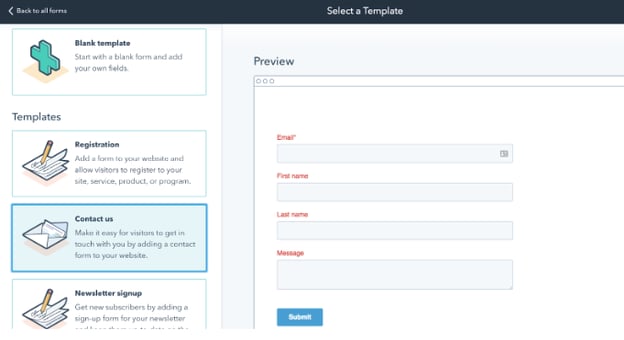

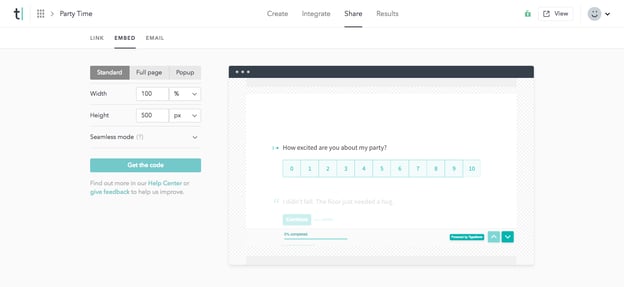

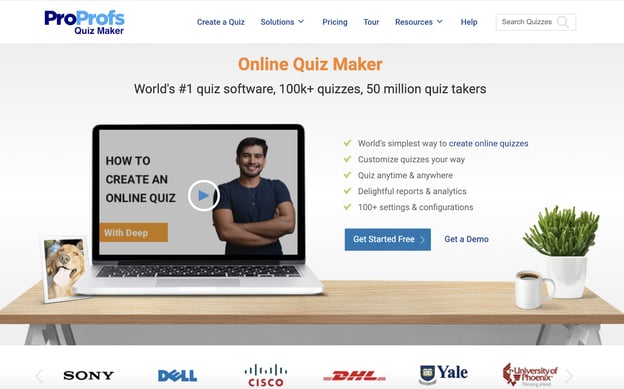
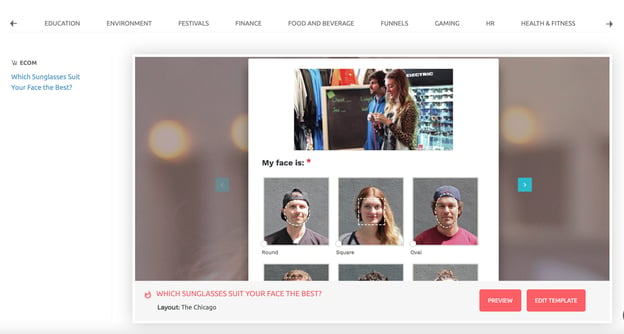

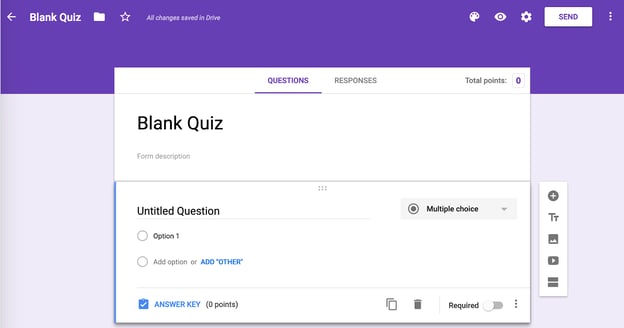



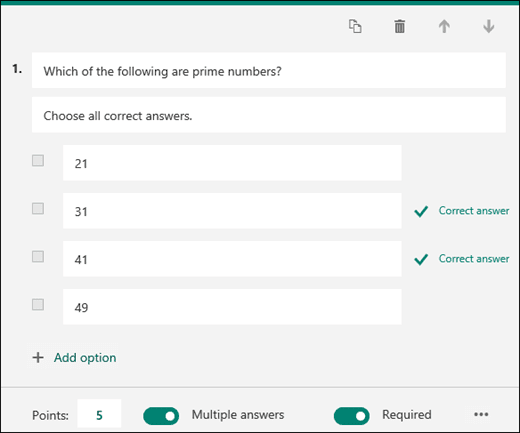

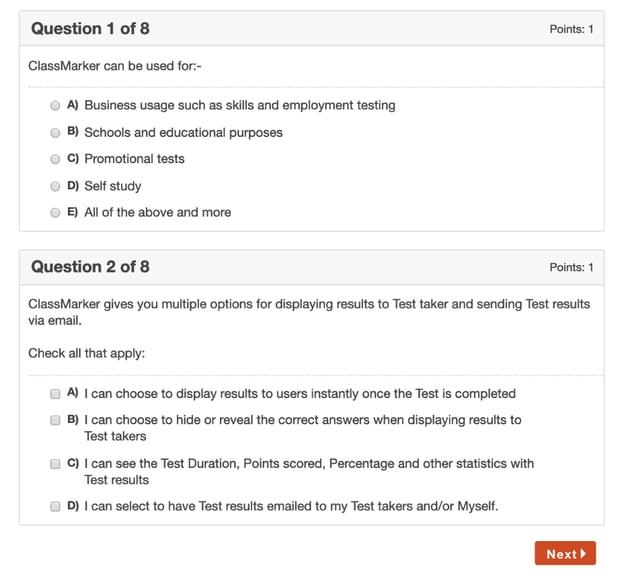



 From a design standpoint, your company’s newsletter should be a true reflection of your brand. For instance, if your website features minimalist design and clean, plain black-and-white text, then you don’t want to create a super colorful newsletter, which might confuse new subscribers.
From a design standpoint, your company’s newsletter should be a true reflection of your brand. For instance, if your website features minimalist design and clean, plain black-and-white text, then you don’t want to create a super colorful newsletter, which might confuse new subscribers.






























![→ Download Now: The Beginner's Guide to Email Marketing [Free Ebook]](https://i4lead.com/wp-content/uploads/2021/07/53e8428a-29a5-4225-a6ea-bca8ef991c19.png)








![→ Free Download: Free Marketing Reporting Templates [Access Now]](https://i4lead.com/wp-content/uploads/2021/07/0d883e85-c2e5-49bb-bef2-bfddb500d84b.png)



 Your chart will automatically be created based on the values in our template.
Your chart will automatically be created based on the values in our template.














 Mailchimp is one of the top names in email marketing, in part because of its accessibility. It’s super easy to learn and build your first few email templates, and you can get started right now with a free plan. As you scale your business, you’ll find additional options, features, and tools for your needs.
Mailchimp is one of the top names in email marketing, in part because of its accessibility. It’s super easy to learn and build your first few email templates, and you can get started right now with a free plan. As you scale your business, you’ll find additional options, features, and tools for your needs.







